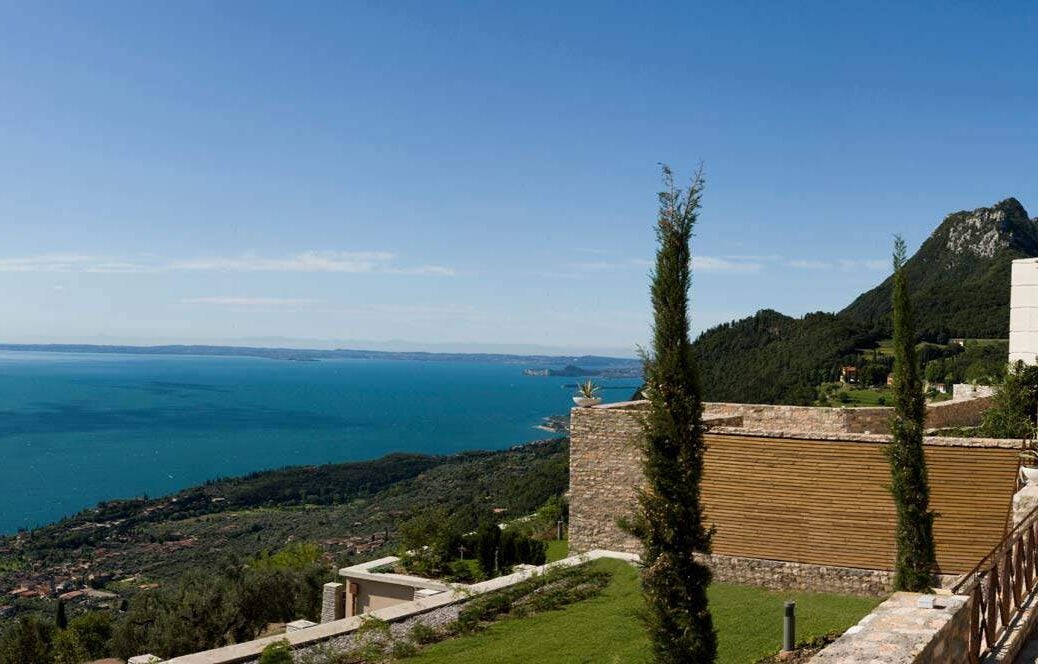
What have the Romans ever done for us? Plenty if you’re a spa lover — and now the Italians are enjoying a spa renaissance with a modern medical twist according to Jo Foley.
The nation that invented la dolce vita and all that goes with it — the fun, fashion, glamour and glitz — is the descendant of the one that also gave us spa (salus per aquam), so it is hardly surprising that some of the more advanced theories and practices of the spa industry are to be found in Italy. From the ancient hotbed of steam and intrigue at the legendary Caracalla baths, the Italians are still contriving, designing and researching new beauty therapies and medical offerings to maintain la bella figura. From the Dolomites to the Med, Italian spas are at the forefront of spa treatments. While looks have always been important to Italians, feeling good is now becoming just as important. Alongside facial fillers, laser skin treatments and liposuction, the spa guest now wants a full medical analysis, cosmetic dentistry, sleep management, stress busting and sports injury repair. While pampering is also important, it’s not the star turn any more.
Lake Garda
Lefay Resort and Spa sits in 27 acres of parkland with spectacular views across Lake Garda, and the surrounding olive and lemon groves. This eco-resort is where classical Chinese medicine meets the best of modern Western research. It features five different types of sauna and a terrific saltwater lake for flotation therapies, and a stunning swimming pool with lake view. There’s a running circuit, a choice of wellness paths, and therapeutic gardens for guests who wish to meditate. And while many wraps, massages and facials are available, it excels at traditional Chinese medicine therapies such as tuina (massage), acupuncture, and moxibustion. Each guest has a full medical test on arrival followed by a stress analysis, an intolerance test (food), and a postural analysis. Two new offerings are a fiveday detox programme and a Gua Sha facial massage. The detox utilises Chinese herbal prescriptions for internal and external cleansing, plus mud wraps and lymph-draining body massage. The facial is a non-invasive treatment using acupuncture and lymphatic massage.
South Tyrol
Merano is one of the grandest old spa towns of northern Italy, with not only one of the most beautiful thermal centres but also a super luxury palace hotel. Palace Merano is now home to Espace Henri Chenot, named after the man whose system it follows.
Henri Chenot is an expert naturopath and bioenergetics psychologist as well as a traditional Chinese medicine specialist. His work and research led him to a process he describes as ‘biontology’. This measures how the body ages and what it needs to deal with it in treatments and therapies: the initial process takes time. First there’s a detailed questionnaire, which runs to over 30 pages (no surprise that a week’s stay is the minimum), followed by a full medical which includes tests, X-rays and scans, after which a programme is prescribed which includes, alongside treatments, nutritional guidance and exercise. Chenot is one of the few spas which has its own laboratories, which not only means results are quickly accessed but also ensures security — essential
for some of its high-profile guests. Food is light (very light) but looks wonderful (very Italian), and one day during each stay is a fasting one. Massage, mud wraps and jet blitzes are the order of the day, while Dominique Chenot is queen of all that is new and effective in beauty. Guests can have a skin analysis, jet peels, fillers and facials alongside cellulite treatments and bust-firming therapies.
Tuscany
I f any spa has the credentials for a longevity programme, it is surely Grotta Giusti in the Tuscan spa town of Monsummano Terme, an elegant 19thcentury villa set in beautiful parkland lying on a 130-million-year-old treasure — a thermal cave. Undiscovered for most of those years, the cave has been in use at the spa for almost a century after thermal waters were discovered there. The slow dripping of the water eroded the local stone over the centuries, until it now resembles something out of The
Flintstones and provides one of the most enjoyable heat and steam spa treatments anywhere. Guests begin the cave therapy by walking to Hell — so called because it’s where the temperature is at its peak. There are places to sit and lie down and clocks to tell you when you’ve had enough, after which a slow walk through the cave takes you first to Purgatory, where it’s a little cooler, and then to Heaven, which is cool and full of light. All that in the space of an afternoon, and good not just for relaxation but also for easing tight and aching muscles. Add to this the recently introduced Longevity programme, which has been developed and trialled over the past two years, and the road to heaven looks easier. This seven-day programme is based on rebalancing the immune, nervous and endocrine systems to aid healthy ageing while helping to reduce incidences of chronic and degenerative diseases. It involves blood and DNA testing, medical, diet and osteopathic consultations, cognitive behaviour therapy, and nutritional analysis as well as daily mud wraps and steam baths. Finally, an online platform is available for guests to keep in contact with the medical team when back home, should they need to.






